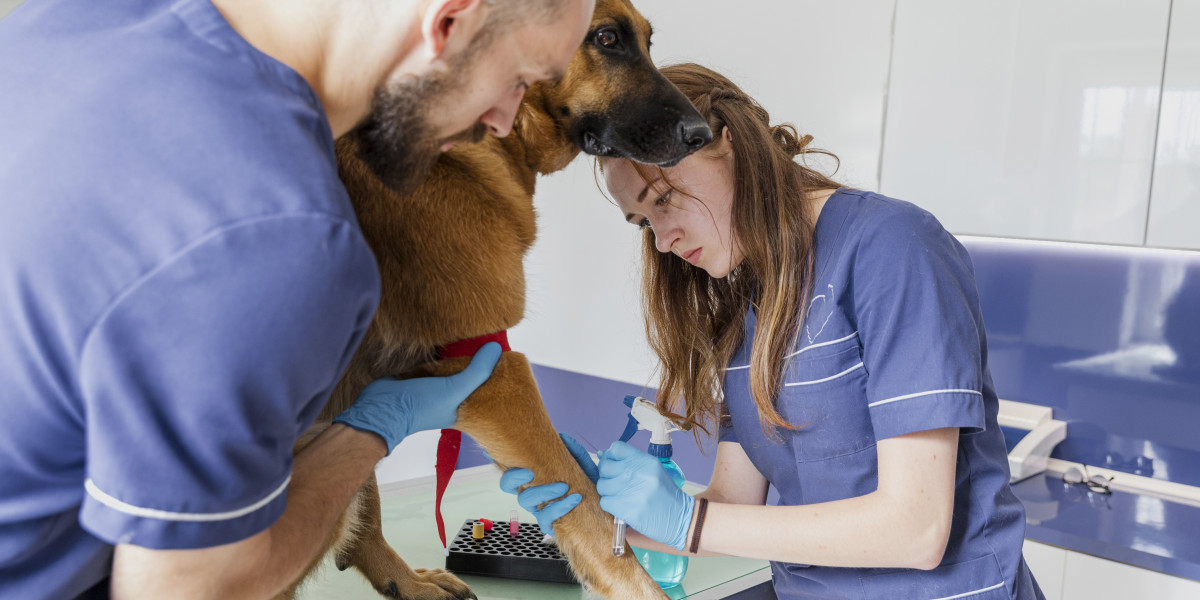Introduction
When a dog injures its cruciate ligament, the impact can be immediate and painful. The ligament, which stabilizes the knee joint, can weaken or tear due to sudden trauma or gradual degeneration. This injury is one of the most common orthopedic problems seen in dogs and can severely affect their mobility. For moderate to severe cases, TPLO surgery (Tibial Plateau Leveling Osteotomy) has become one of the most trusted and effective solutions for restoring stability and function.
Understanding Cruciate Ligament Injuries
The cranial cruciate ligament (CrCL) connects the thigh bone (femur) to the shin bone (tibia). When it tears or ruptures, the knee becomes unstable, causing pain, inflammation, and difficulty bearing weight.
Common Signs Include:
Limping or reluctance to use the affected leg
Difficulty rising, jumping, or climbing stairs
A clicking or popping sound in the knee
Visible discomfort or stiffness after exercise
If left untreated, cruciate injuries can lead to chronic arthritis and permanent lameness. Early diagnosis and proper surgical correction are essential for preventing long-term complications.
What Is TPLO Surgery?
Tibial Plateau Leveling Osteotomy (TPLO) is a specialized orthopedic procedure designed to stabilize the knee joint after a cruciate ligament injury. Instead of repairing the torn ligament, TPLO changes the geometry of the tibia (shin bone) to eliminate the need for the ligament’s stabilizing function.
How It Works:
During TPLO surgery, a curved cut is made at the top of the tibia. The upper section, known as the tibial plateau, is rotated to a flatter angle. This prevents the femur from sliding backward during movement, stabilizing the knee even without a functioning ligament. The rotated bone is then secured with a surgical plate and screws, allowing it to heal in its new position.
The result is a stable, pain-free joint that allows the dog to walk, run, and play again once recovery is complete.
Which Dogs Benefit from TPLO Surgery?
While TPLO can be performed on dogs of various sizes, it is especially recommended for:
Medium to large breeds such as Labradors, German Shepherds, and Rottweilers
Highly active or athletic dogs that place high stress on their joints
Dogs with complete cruciate ligament ruptures
Cases where other surgical techniques have failed or are unsuitable
Smaller breeds may also benefit when instability is significant or when conservative management doesn’t provide lasting results.
The TPLO Procedure Step by Step
Pre-Surgical Assessment – X-rays are taken to measure the tibial plateau angle and confirm the diagnosis. Blood tests ensure your dog is fit for anesthesia.
Anesthesia and Preparation – The leg is carefully clipped, cleaned, and prepared for surgery under sterile conditions.
Bone Realignment – The surgeon makes a curved cut in the tibia, rotates the plateau to the desired angle, and stabilizes it using a specialized plate and screws.
Closure and Recovery – The incision is sutured, and post-operative X-rays confirm correct alignment. Your dog is monitored during recovery to ensure comfort and safety.
The entire procedure typically takes 1–2 hours depending on the complexity of the case.
Recovery and Rehabilitation
Recovery is a gradual process that requires patience, consistency, and professional follow-up.
The Healing Timeline:
Weeks 1–2: Strict rest and leash-only walks. Pain medications and anti-inflammatories help manage discomfort.
Weeks 3–8: Gentle, controlled movement is reintroduced. Most dogs start bearing weight on the operated leg within a few days.
Weeks 9–12: Increased walking time and mild physiotherapy under veterinary guidance.
Months 3–6: Full bone healing is achieved, and your dog can slowly return to normal activity.
Your veterinarian will schedule follow-up X-rays to monitor healing progress. Physical therapy—such as hydrotherapy or controlled exercises—can significantly enhance recovery and muscle strength.
Benefits of TPLO Surgery
Improved Stability: Restores the knee’s ability to function normally without relying on the damaged ligament.
Long-Term Comfort: Reduces pain and risk of arthritis development.
Faster Recovery: Many dogs begin using the leg within days after surgery.
Enhanced Mobility: Allows active dogs to return to running, playing, and climbing again.
High Success Rate: With proper care, most dogs regain full mobility and long-term stability.
Possible Risks and Complications
Like all surgical procedures, TPLO carries certain risks, although complications are rare in experienced hands. Potential issues may include:
Post-operative infection or swelling
Implant loosening or breakage (extremely rare)
Delayed bone healing
Mild stiffness or intermittent lameness during recovery
Following post-operative instructions closely—especially regarding rest and exercise restriction—greatly reduces these risks.
Long-Term Outcomes
Dogs who undergo TPLO surgery generally enjoy excellent outcomes, with over 90% regaining near-normal or full function. Once the bone has healed, the metal implants usually remain in place permanently without causing any discomfort.
Maintaining a healthy weight and consistent exercise routine helps prevent strain on the repaired knee and supports joint health for years to come.
Conclusion
TPLO surgery remains one of the most advanced and successful procedures for treating cruciate ligament injuries in dogs. It restores stability, reduces pain, and allows dogs to live active, healthy lives again.
For pet owners seeking trusted orthopedic expertise, the British Veterinary Centre offers advanced TPLO procedures performed by experienced surgeons using precision techniques and compassionate care. From diagnosis to rehabilitation, their team is dedicated to helping every dog regain strength, mobility, and confidence—one step at a time.








